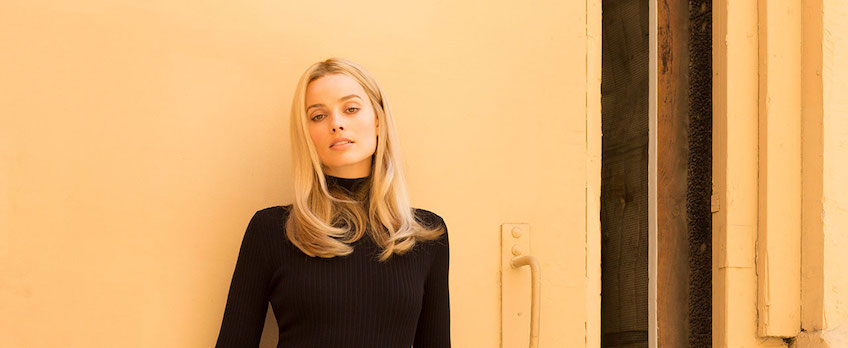Once Upon a Time in Hollywood is a Blood-Soaked Fairy-Tale that Dares You to Feel Outraged

Quentin Tarantino, both the man and his movies, has always courted controversy in the lead-up to his films. The Australian premiere of Once Upon a Time in Hollywood was prefaced by questions of how much dialogue Margot Robbie was given, accusations that he was sensationalising Sharon Tate’s death and the suggestion that we ‘cancel’ him altogether. The fairy-tale title, the knowledge that the film revolves around the lead-up to Tate’s murder, and Tarantino’s infamous penchant for on-screen violence, have led to high levels of both dread and outrage for those who haven’t seen it.
This furore means that writing about Once Upon a Time in Hollywood feels filled with risk. The film has become a test, read at the most literal level – is Tarantino a misogynist? How many lines does Margot Robbie have? It’s not the quality of the film that’s up for debate, but what it proves about people’s preconceptions.
I don’t know if I loved Once Upon a Time in Hollywood, but I haven’t been able to stop thinking about it since I saw it on Saturday night. The plot is minimal: characters including actor Rick (Leonardo DiCaprio), his stunt double Cliff (Brad Pitt), and Sharon (Robbie), meander through Hollywood in 1969. The plot isn’t really the point. Tarantino deliberately plays to the outrage culture he knew would surround the film, and the result is shocking, sickening and incredible.
The drama over Robbie’s lines, or lack of them, risks eclipsing her brilliant performance. Robbie gives us a Sharon who is often alone but never lonely – she hugs strangers, dances joyously and attends her own movies, where the real Sharon Tate appears onscreen. The bright loveliness with which she imbues Sharon makes the dread of knowing what’s coming all the worse.
Tarantino, like many auteurs, has certain stylistic elements he keeps returning to. For the fans, this can lead to joyous familiarity and a sense of being in on the joke, but at worst, this can feel lazy and overstuffed. He walks a fine line in Once Upon a Time in Hollywood. There’s overhead shots of people walking, omniscient narration, Red Apple cigarettes and, yes, women’s feet. His usual players appear in cameos and he uses the Hollywood setting to parody his previous films. Whether you find this fun or self-indulgent will depend on how much you like his work. He’s not here to convert.
But it’s exactly this feeling of familiarity that Tarantino plays on, drawing us in with in-jokes and then horrifying us. However, the idea that Tarantino is a juvenile prat blithely depicting violence for pure shock value doesn’t hold up. He knows full well what he’s doing.
This is a film that valorises cinema, in more ways than one. Obviously, it’s about Hollywood and the business of making movies. But it’s also about the relationship between creator and audience, specifically the group dynamics of the cinema crowd. We see this first in the scene where Sharon attends her own movie and carefully observes the reactions to her performance. In the climax, we become the audience being judged, as Tarantino challenges our capacity to withstand violence.
Once Upon a Time in Hollywood is a film that benefits from being watched in a cinema, surrounded by people. A key scene began with laughter from the audience in the Astor Theatre. The scene has an air of absurdity and the actors are in fine comic form. Even when the violence started, it was greeted with laughter that gradually became nervous. But there was a particular point when the laughter cut off abruptly. And after that, some people started groaning in horror. As the scene continued, punctuated by gasps and disgusted noises from the crowd, there was a sense of chastisement. It felt like Tarantino was mocking us, saying, you were laughing, weren’t you? Why was that funny, but this isn’t? Given what you know about these characters, why are you so horrified? Later, at another moment of violence, the crowd laughed and cheered, then abruptly groaned when the result of that violence was shown in detail.
I’m saying ‘the audience’ as though I wasn’t part of it, but that’s not true. I laughed at first and then went silent. My heart raced and I felt sick. Like everyone there, I walked into a Tarantino film knowing I would see violence. And then I felt exposed – this isn’t what I wanted, take it back.
It’s this power play between audience and creator that makes the cinema environment key to the film. Tarantino uses the medium of cinema to connect with us, make us comfortable with in-jokes and expectations, and then horrify us. Our response, and the way we react to different kinds of violence, is inseparable from the film itself.
Tarantino’s been in the game for over 25 years; he knows what people expect from him and how they perceive him. His film is imbued with self-consciousness about his own reputation. He unquestionably knew that people would label Once Upon a Time in Hollywood problematic and misogynist before they saw it.
No doubt there will be people who maintain that the film is problematic and misogynistic even after they go see it, too. The film is shocking in its violence, yes. But in the way he pulls different reactions from the audience at different moments, and in the way he depicts the outcomes of the violence, Tarantino asks us what we’re willing to see on screen – and why. This is a difficult, complicated film that demands nothing less than a reckoning with ourselves as media consumers. Did he show us what we wanted to see? Perhaps it’s more comfortable to feel outraged than to question ourselves.